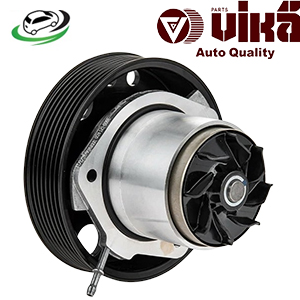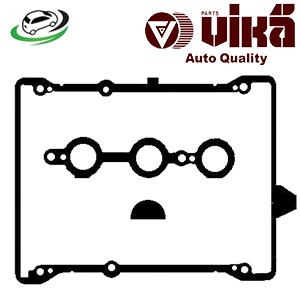-12%
Get Engine Oil Dipstick Funnel Tube VW PASSAT 1.8L / Audi A4 S4 A6 S6 A6L 06B103663B
The engine oil dipstick funnel tube is a narrow, hollow tube typically made of metal or plastic. It is connected to the engine block or oil pan and extends upwards to a point where the dipstick can be easily accessed. The dipstick itself is a long, thin metal rod with markings indicating various oil levels. The funnel tube guides the dipstick into the oil sump, allowing for accurate measurement of the oil level.
How Does the Dipstick Funnel Tube Work?
The dipstick funnel tube functions as a pathway for the dipstick, ensuring that it reaches the oil sump without encountering obstructions. Here’s a step-by-step explanation of how it works:
- Guidance: The tube ensures that the dipstick is correctly inserted into the oil sump, preventing it from getting caught on internal engine components.
- Sealing: The top of the dipstick funnel tube often features a rubber or plastic grommet that seals around the dipstick, preventing contaminants from entering the engine.
- Measurement: When the dipstick is inserted into the tube and pulled out, it carries a small amount of oil. The markings on the dipstick indicate whether the oil level is within the recommended range.
Benefits of the Dipstick Funnel Tube
The dipstick funnel tube provides several critical benefits that enhance engine maintenance and reliability:
- Accurate Oil Measurement: By guiding the dipstick into the oil sump, the tube ensures accurate oil level readings, which are essential for maintaining proper lubrication.
- Contaminant Protection: The tube helps prevent dirt, debris, and other contaminants from entering the engine through the dipstick opening, safeguarding the engine’s internal components.
- Ease of Access: The tube extends to a convenient location, making it easier for vehicle owners and mechanics to check the oil level without having to reach into the engine bay.
- Reduced Spillage: The funnel design of the tube helps minimize oil spillage when checking the oil level, keeping the engine bay cleaner.
Common Issues with the Dipstick Funnel Tube
While the dipstick funnel tube is generally reliable, it can encounter problems that affect its performance. Common issues include:
- Blockages: Dirt, debris, or sludge can accumulate inside the tube, making it difficult to insert or remove the dipstick. This can lead to inaccurate oil level readings.
- Leaks: Damage to the tube or the sealing grommet can cause oil leaks, leading to a loss of engine oil and potential contamination.
- Corrosion: Metal dipstick tubes can corrode over time, especially in harsh environments. Corrosion can weaken the tube, leading to cracks or breaks.
- Misalignment: If the tube becomes bent or misaligned, it can make it difficult to insert the dipstick properly, resulting in inaccurate readings or damage to the dipstick.
Signs of a Failing Dipstick Funnel Tube
Recognizing the signs of a failing dipstick funnel tube can help prevent more severe engine problems. Common symptoms include:
- Difficulty Inserting or Removing the Dipstick: If the dipstick is hard to insert or remove, it may indicate a blockage or misalignment in the tube.
- Inaccurate Oil Readings: Consistently inaccurate oil level readings can be a sign of a damaged or blocked dipstick tube.
- Oil Leaks: Visible oil leaks around the base of the dipstick tube or from the grommet can indicate damage or improper sealing.
- Corrosion or Damage: Visual inspection may reveal signs of corrosion, cracks, or other damage to the tube.
Maintenance and Replacement
Proper maintenance of the dipstick funnel tube is crucial for ensuring accurate oil level readings and preventing engine damage. Here are some maintenance tips:
- Regular Inspections: Periodically inspect the dipstick tube for signs of damage, corrosion, or blockages. Ensure that the sealing grommet is in good condition.
- Clean the Tube: If you notice any blockages or buildup inside the tube, clean it using a thin, flexible brush or compressed air. Be careful not to push debris further into the engine.
- Check for Leaks: Regularly check the area around the base of the dipstick tube for signs of oil leaks. If you notice any leaks, address them promptly.
- Replace Damaged Components: If the dipstick tube is damaged or corroded, replace it with a new one that meets the manufacturer’s specifications. Ensure that the new tube is properly aligned and securely installed.
- Use Quality Parts: When replacing the dipstick tube or the sealing grommet, use high-quality parts that are designed for your specific engine model.
Follow us on Facebook for more parts.



